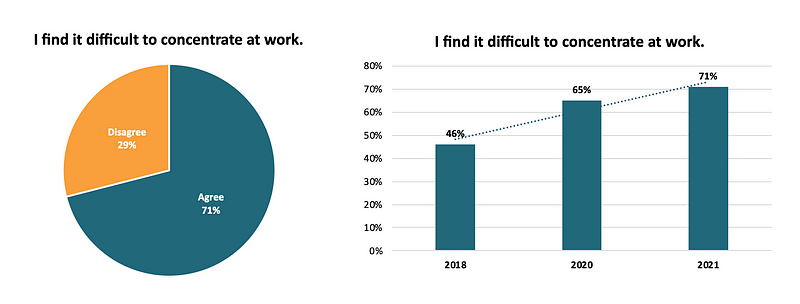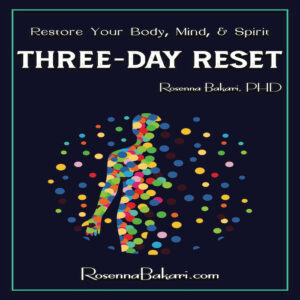Emotional Resources at Work

Work is about productivity. We show up to increase economic value by repetitively putting widget A on widget B and going home. That’s the old assembly line version of work that most of us are no longer doing. Increasingly, productivity requires human-to-human interaction. This shift changes the way we live, not just how we work.
Work used to be a place where we could distract ourselves from our problems by mindlessly placing widgets while making small talk. The contemporary version of work requires collaboration, vulnerability, and interdependence that are more likely to underscore any difficulties we have outside of work.
The COVID Trigger
COVID quarantine isolation, uncertainty, and loss in recent years have ripped through the global community like an earthquake, and the aftershocks are showing up at work. High demands and low emotional resources ripped scabs off unaddressed old wounds disguised as new ones. The need for sophisticated communication arose at work and in the home. The world learned quickly how intricately intertwined our work and home lives are despite the century-old illusion that we could keep them separate.
High demands and low emotional resources ripped scabs off unaddressed old wounds disguised as new ones.
Many people struggle to keep up with work demands, not because the work is difficult, but because the interaction required to do the job is mentally exhausting. For example, researchers Plaisier, et al. have shown that employees with depression and anxiety can experience further mood dysregulation and subsequent productivity loss from work interaction.
Moreover, mental distress markers pass for personality at work. In many circumstances, mental distraction, risk intolerance, resistance to feedback, and introvert patterns may not be problematic. But, where there is high emotional demand, they take their toll.

Executives may disengage from people and only focus on the nonhuman aspects of the job. They become problem solvers rather than visionary leaders. New employees with old wounds may feel vulnerable collaborating with others or refuse to ask for help. Managers can be resistant to feedback and prone to work conflicts. Introverted employees may miss leadership opportunities.
When behaviors are normalized, they are resistant to positive thinking, relaxation techniques, and efficacy training. They are not diagnosable as mental illness, nor should they be. But, they are sometimes markers of invisible trauma. They indirectly affect people’s ability or willingness to connect on a meaningful level, reason beyond rules, choose quality allies, leaders, and partners, and self-regulate emotions in difficult times.
Coping at Work
Psychologists, police officers, doctors, teachers, and other public-interfacing professionals are trained, or at least warned, to disengage from work when not working. Research on work detachment shows disengagement to be difficult, mainly when work elicits uncomfortable emotions. The reverse is also true. Employees carry open wounds into work.
One in ten adults had four or more adverse childhood experiences. There are more than 60 million adult survivors of childhood sexual abuse, and half of them never disclose it to anyone. Divorce and addiction rates are increasing in adults and their children.
The percentage of Americans who are prescribed medication to help with emotion regulation is alarming. Erich Fromm, a humanistic philosopher, asserted decades ago that what is passed off as normal is pathological. Instead of infusing healing into communities, we create a culture around our wounds.
We provide distractions and dictate customs to disguise dysfunction. When work as a distraction from pain ran its course, we began to identify it as the cause of pain. Perhaps work is not the problem, but the problems people bring to work compromise well-being.
Perhaps work is not the problem, but the problems people bring to work, compromise well-being.
Confidently explaining decisions, convincing clients, leading a team, creating solutions collaboratively, and positioning oneself as an asset at work requires intention and focus. The more human engagement required the more stressed an employee feels when emotional wounds are carried into the work environment.
There is no magic door for employees to walk through to give them a clean slate for 8 hours, no matter how well they seem to perform most of the time. Low-level tasks may be unaffected. However, high-level functions that demand full presence will feel difficult. To the degree that work requires focus, mental flexibility, and engagement with one another without judgment, employees are likely to fall short, no matter what their area of specialty.
Falling Short
The greatest gymnast in the world, Simone Biles, failed to perform at the high-stakes Olympics event after going public about her victimization of sexual abuse by the infamous team doctor, Larry Nassar. Top-ranking tennis player, Naomi Osaka, withdrew from high-stakes international competitions due to emotional distress. One of the most successful entertainers alive, Will Smith, was overcome by emotional wounds at the most prestigious event in entertainment, The Oscars. Smith overreacted to an insensitive comment with physical aggression on live television.
Biles, Osaka, and Smith have in common that their emotional resource reserves were unavailable when they needed to be their best at their jobs. Expertise and professional preparedness are no competition for open wounds. Even the best will fall victim to underperformance. It’s hard to be a hero with a broken wing.
Expertise and professional preparedness are no competition for open wounds.
Please, make no mistake about it. The workforce is not recovering from COVID but from a lack of well-being. Diversity, equity, and inclusion require administrators’ wellness. Retention requires staff wellness. High productivity requires managers’ wellness. Engaged employees need a sense of workplace wellness. Support is needed to reorient people to their inner selves.
Currently, most employees feel their well-being is dismissed by their employees, according to the 2022 Mind the Workplace Report published by Mental Health America.

A Better Plan
Some programs miss the well-being mark by supporting mental illness instead of mental wellness. Mental well-being is a consciousness of empowerment that many people must be invited into instead of being well by default. Many people confuse empowerment with power, especially at work.
But, unaddressed wounds are kryptonite to empowerment. You may achieve power, but not empowerment.
Let me clarify that power is the ability to control someone or something outside of oneself. Empowerment is the ability to control your inner world. Peace, self-soothing, low conflict, creative flow, and mindfulness are internal experiences that dictate decisions and guide engagement. You can have a mental diagnosis and still be empowered. You can be undereducated or underemployed and still be empowered. But, unaddressed wounds are kryptonite to empowerment. You may achieve power, but not empowerment.
Ground Rules
Empowerment programs are a worker-friendly approach to supporting well-being. Transformational leadership advocates know that employees need to feel empowered in their work tasks, but that’s not enough. Employees need to feel empowered in their lives to be most effective.
The fusion of personal and professional selves must be recognized. As employers understand that personal development is professional development, empowerment programs will support workers’ well-being. A few ground rules may differentiate empowerment programs from mental wellness programs.
Professional Development
The program should be branded as a professional development resource that invites participation without having to identify weaknesses. Incentives for participation can be offered, but not high stake incentives that would ultimately punish those who choose not to participate. Programs should not be punitive for underperformance. Any program associated with corrective measures is likely to be avoided even when needed.
Everybody In
Programs should invite people at various levels of leadership to participate, which allow employees to course-correct within a framework of normalcy. Employee-wide participation diminishes stigma when businesses normalize wellness programs, check-ins, and access. People drink coffee at work because it’s available, and its availability is normalized. No one takes a count to decide who needs coffee or makes it a weakness.
If we present opportunities for everyone to improve their wellness, no one is unnecessarily vulnerable.
Several years back, a movement began to request all speakers to use microphones. Some speakers would present without it unless someone said they could not hear. Advocates for people who are hearing impaired noted that impairments should not have to be revealed when accommodations can be incorporated seamlessly. When presenters use the mic, everyone can hear.
Many television programs now air with closed captions as the default so that everyone gets to play in the sandbox, and no one is required to identify their vulnerability. Normalizing wellness is the same concept. If we present opportunities for everyone to improve their well-being, no one is unnecessarily vulnerable.
Focus on Empowerment
An empowerment program removes the resistance to receiving help, as well as address broader areas of people’s lives. Many employees are distressed from overemphasizing the role of relationships in their lives, setting goals that they don’t really want, and carrying guilt and shame that doesn’t belong to them. Empowerment can address these issues without using a deficit approach to mental health.
My empowerment program consists of 12 wellness topics that address practical experiences of everyday life, such as “How to Apologize” and How to Build Relationships when You Don’t Trust People.” Other topics address emotional wounds more directly, such as “How to Heal Childhood Abuse Without Forgiving the Person Who Caused It,” and How to Re-parent Your Inner Child.” Empowerment emphasizes how people show up in the world rather than how they feel.
Zero Costs
The program cost to participants should be as close to zero as possible. Employers should pay for the program as professional development. Cost is a deterrent, particularly at work. Work is where people go to earn money, not spend it. Employers should invest in their workers’ well-being in tangible ways, such as empowerment programs.
Online Accessibility
Businesses should prioritize online programs for accessibility. Live sessions are more inviting than recorded sessions. So, when possible, live webinars should be part of the program design. People can participate on their phones or computers. The ability to participate at home instead of work may also appeal to some employees. Online programs also allow access to replays when participants cannot attend live sessions.
Conclusions
When employees carry less baggage to work, the workload is easier to carry. Well-being intertwines what happens at work and in the home with what is inside the individual. As many people have experienced unprecedented stress and anxiety levels since the COVID pandemic, deeper problems have been revealed. Work is a place where many wounds gather. The quality of the work environment will determine how those wounds show up.
First, we must heal our illusion that we can keep personal and professional issues separate.
Workplaces can support healthy living practices when they understand that personal development is professional development. Businesses and organizations can rise to meet new standards for workplace wellness that also make employees better parents, friends, and life partners. The point is not to make employees feel better or work better. The point is to help them become their best selves.
Some employees will break family legacies of abuse and heal trauma responses to adverse experiences when guided to do so. Others will release shame or step into forgiveness. We can turn workplaces into healing spaces more seamlessly than we imagine. First, we must heal our illusion that we can keep personal and professional issues separate. The payoff is obvious. Healed hearts work better together.
References
Adams, T & Nguyen, T (February 2022). Mind the Workplace 2022 Report: Employer Responsibility to Employer Mental Health. Mental Health America, Alexandria VA.
Center for Disease Control (2019): Mental Health in the Workplace. Division of Population Health, National Center for Chronic Disease Prevention and Health Promotion Retrieved April 12, 2022. https://www.cdc.gov/workplacehealthpromotion/tools-resources/workplace-health/mental-health/
Plaisier I, Graaf R de, Bruijn J de, Smit J, van Dyck R, Beekman A, et al. (2012). Depressive and Anxiety Disorders on-the-Job: The Importance of Job Characteristics for Good Work Functioning in Persons With Depressive and Anxiety Disorders. Psychiatry Residence. 200:382–8. doi: 10.1016/j.psychres.2012.07.016 22862911.
Sonnentag, S., & Niessen, C. (2020). To Detach or Not to Detach? Two Experimental Studies on the Affective Consequences of Detaching from Work During Non-work Time. Frontiers in psychology, 11, 560156. https://doi.org/10.3389/fpsyg.2020.560156




